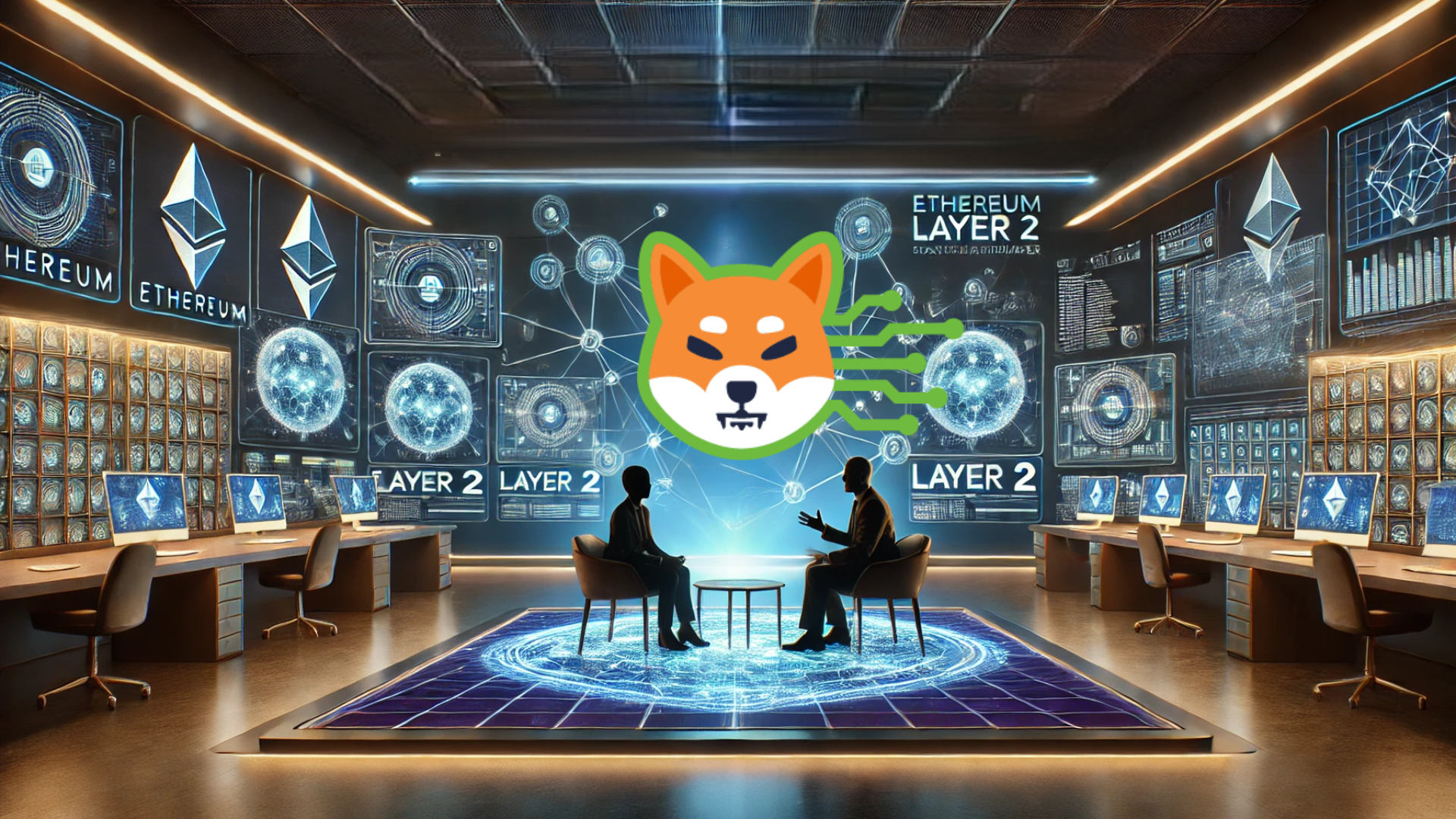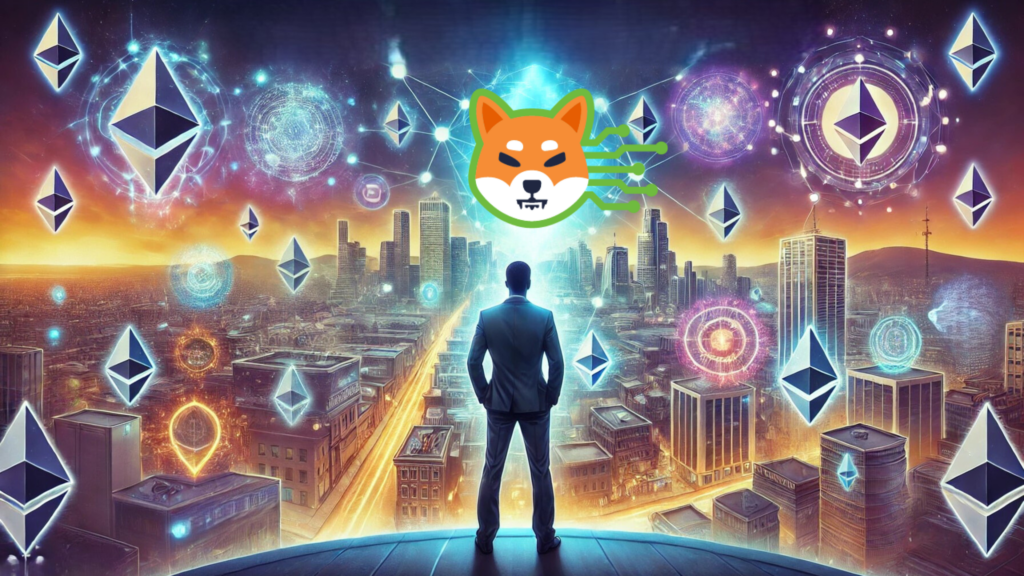Ethereum’s infamous congestion is becoming a distant memory as Layer 2 solutions come online. The L2s are designed to unleash a new era of blockchain speed, affordability, and innovation, with the potential to reshape industries and revolutionize how we interact with digital assets.
Key Points
- Ethereum’s infamous congestion is becoming a distant memory as Layer 2 solutions come online
- The L2s are designed to unleash a new era of blockchain speed, affordability, and innovation, with the potential to reshape industries and revolutionize how we interact with digital assets
- We spoke with Anndy Lian, an influential blockchain expert, best-selling author, and dynamic business strategist, for a deep dive into this transformative technology
We spoke with Anndy Lian, an influential blockchain expert, best-selling author, and dynamic business strategist, for a deep dive into this transformative technology.

The Shib: Ethereum’s scalability challenges have been a major roadblock to mass adoption. How do you see Layer 2 solutions not only addressing these issues but also unlocking new possibilities for the blockchain industry as a whole?
Lian: Ethereum’s sluggish transactions act like a toll booth on the information highway, slowing everyone down. Layer 2 solutions bypass this by processing transactions on a faster track, reducing wait times and costs. This opens the door for more users, new applications, and a wave of innovation on the blockchain. Beyond Ethereum, Layer 2 has the potential to connect different blockchains and fuel the growth of DeFi and NFTs by enabling faster and cheaper transactions.
Security and decentralization are still concerns with Layer 2, but the industry is actively working on preserving these core principles alongside scalability. This promising technology has the potential to unlock a new era of innovation and mass adoption for blockchain technology.
The Shib: Security and decentralization are often cited as concerns with Layer 2 solutions. How can we ensure that these scaling solutions maintain the core principles of blockchain technology while providing the benefits of speed and efficiency?
Lian: Layer 2 solutions address Ethereum’s scaling issues by offloading transactions, enabling faster speeds and lower fees. This paves the way for broader adoption and innovation in blockchain technology. However, concerns exist regarding security and decentralization. To address this, Layer 2 solutions inherit security from Layer 1 blockchains and utilize cryptographic techniques for verification. Decentralization is fostered through community governance and distributed validator networks. It’s a balancing act – some solutions prioritize speed with more centralized elements, while others aim for a more even spread. Understanding the specific security model of a Layer 2 solution is crucial. The future is bright. As Layer 2 technology matures, we can expect advancements in both security and decentralization, allowing them to unlock the true potential of blockchain technology.
The Shib: The Layer 2 landscape is rapidly evolving, with various technologies and projects vying for dominance. In your opinion, what are the key factors that will determine the success or failure of a Layer 2 solution, and which projects do you believe have the most potential to reshape the industry?
Lian: The Layer 2 race is heating up, with various technologies vying for dominance. Security, inherited from strong Layer 1s and proven verification methods, is paramount. But scalability is just as important – handling high transaction volume efficiently is crucial. Don’t forget decentralization – a distributed network with engaged community governance builds trust. User experience is king – if it’s complex, expensive, or slow, users won’t come. Finally, interoperability, the ability to connect with other blockchains, unlocks a world of possibilities.
Related: New Wallets Trigger Massive Shiba Inu Supply Squeeze
Picking future winners is tough, but some contenders are making waves. Optimistic Rollups like Optimism and Arbitrum offer a good balance between security, scalability, and decentralization. ZK-Rollups like Loopring and Immutable X boast high scalability with strong security potential, but user experience and interoperability might need work. Validium chains like Polygon Hermez take scalability to the extreme, but their reliance on centralized validators raises decentralization concerns.
The winner will likely depend on the specific needs of the application and its users. We can expect further innovation and hybrid solutions that combine the strengths of different approaches as this exciting space matures.
The Shib: Beyond scalability, how do you envision Layer 2 solutions transforming the way we interact with blockchain technology? Can you provide specific examples of use cases or applications that you believe will be revolutionized by Layer 2?
Lian: Layer 2 solutions have the potential to revolutionize how we interact with blockchain technology beyond just speeding things up. Imagine buying your coffee with crypto without breaking the bank – Layer 2’s efficiency could make microtransactions a reality, paving the way for everyday blockchain use in areas like mobile payments and rewarding online creators. For gamers, clunky in-game economies plagued by slow transactions could be a thing of the past. Layer 2 could enable smooth purchases of virtual items and NFT trading within games, creating a more dynamic and immersive experience.
Decentralized social media platforms could leverage Layer 2 for efficient content creation, sharing, and data ownership. This could mean managing your online identity and data with greater ease and security. Even complex supply chains could benefit. Layer 2 solutions could facilitate transparent tracking of every step, from production to delivery, boosting trust and visibility for both businesses and consumers. These are just a glimpse of the possibilities. As Layer 2 matures, expect even more innovative applications to emerge, transforming how we interact with and utilize blockchain technology in our daily lives. The future is brimming with potential.
The Shib: What advice would you give to both investors and developers who are interested in exploring the Layer 2 space? What are the key considerations they should keep in mind when evaluating or building on these solutions?
Related: Excluding Bitcoin Now Poses Greater Portfolio Risk Than Volatility: VanEck
Lian: Entering the Layer 2 arena is exciting, but caution is key for both investors and developers. Investors, diversify! Explore established players alongside promising newcomers. Security is king – understand how Layer 2 solutions inherit security and verify transactions. Look for scalability, smooth user experience, and low fees. Interoperability is a plus, opening future doors. Finally, a strong community and active development inspire confidence.
For developers, choose the right tool for the job. Align your project’s needs with a Layer 2 solution’s strengths in security, scalability, and function. Stay ahead of the curve – the Layer 2 landscape is dynamic. Security is paramount – prioritize robust measures to safeguard user funds and data. User experience is king – make interacting with your dApp seamless. Embrace interoperability to reach a wider audience and unlock future potential. Layer 2 is young, so do your research, be cautious, and adapt as the technology evolves. With careful consideration, both investors and developers can shape the future of this transformative space.
As Layer 2 solutions continue to evolve and mature, the future of blockchain technology is undeniably bright. Anndy Lian’s insights underscore the immense potential of Layer 2 solutions to break down barriers, democratize access, and unleash a wave of innovation that extends far beyond Ethereum.
As this transformative technology matures, we stand on the brink of a new era—one where blockchain seamlessly integrates into our daily lives, powering everything from microtransactions to decentralized social networks and beyond. The future is not just bright; it’s decentralized, scalable, and brimming with possibilities. Layer 2 isn’t just an evolution; it’s a revolution that promises to reshape the digital landscape and empower individuals in ways we’re only beginning to imagine.












